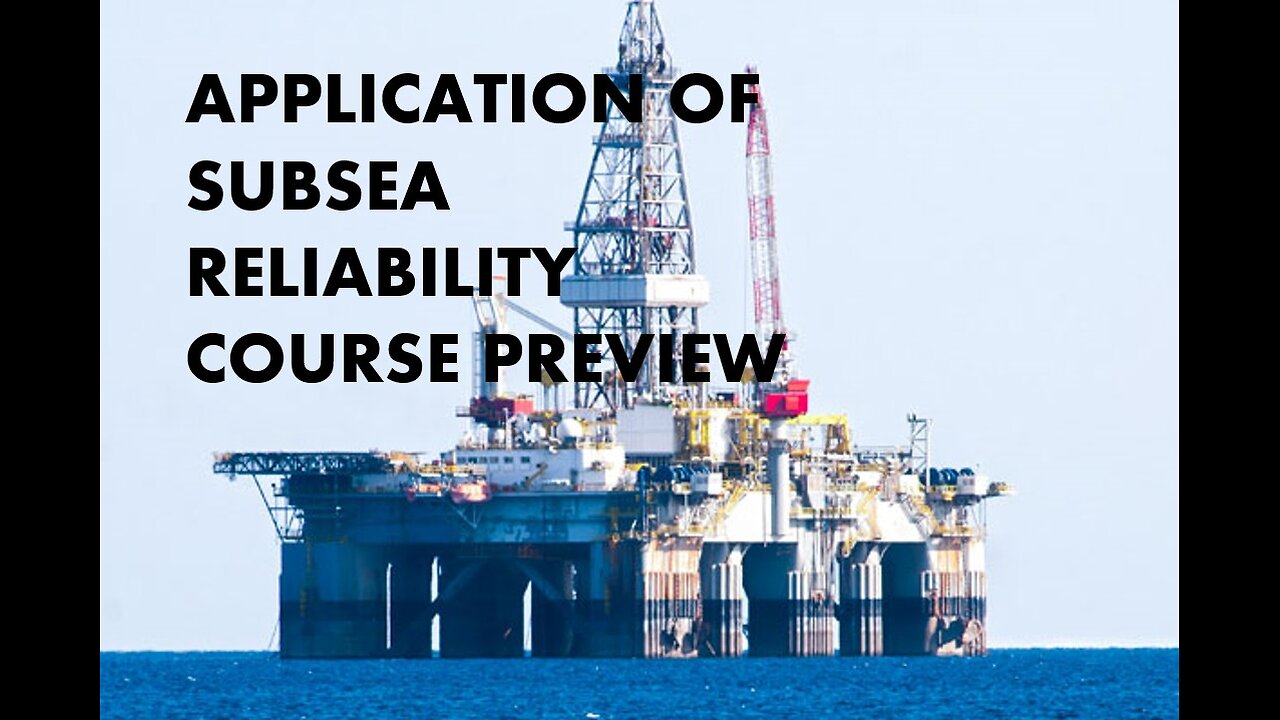Premium Only Content

Applications of Subsea Reliability Course Preview
Due to the high investment costs for deep-water subsea production systems of high-value subsea fields, it is crucial to ensure a high availability to recover the investment. The problem is compounded by the cost of recovery, repair and replacement of failed equipment. Testing and reliability analyses are two pillars of reliability assurance; neither of them on their own assures the delivery of a reliable system. Possibly with more imaginative use of reliability methods, it is possible to optimize testing. It is suggested to use reliability analysis as a guide for allocating resources for testing. This framework allows a better understanding of verification settings and strategies to handle constraints (e.g. costs, expandability, repair-ability, maintainability, intervention procedures, downtime, automation etc.) and performance measures, to achieve highly reliable production systems. The proposed procedure also assists risk management efforts by feeding the results of reliability analyses, testing and project risk analysis into validation processes, the systems engineering measurement process ensures enhanced reliability. We define reliability assurance as a part of the systems engineering processes to ensure the continued function and resilience of the production system from the downhole valve to the subsea equipment, housed on the topside or at an onshore terminal, in their operating environment and condition using the "Fit-For-Service" notion.
For full videos you can visit this link :
https://drive.google.com/file/d/1tRDCsCd7arWqODWKxeDnVP1xnhcBj3iv/view?usp=sharing
and you will be directed to a google drive link where you can download all files of this course
https://drive.google.com/file/d/1ORgC8OlP9mZnFiPQhRTZuaV-ZbcrUWYE/view?usp=drive_link
-
 1:14:57
1:14:57
Sarah Westall
3 hours agoCEO of Crowds on Demand: The Fake World of Social Media, Protests & Movements w/ Adam Swart
43.2K4 -
 4:03:25
4:03:25
Geeks + Gamers
6 hours agoTuesday Night's Main Event
66.3K2 -
 40:36
40:36
RiftTV
5 hours agoHow We Got 400 Leftists FIRED for MOCKING Charlie Kirk | The Rift | Guest: Olivia Krolczyk
67.5K51 -
 1:28:58
1:28:58
Badlands Media
19 hours agoBadlands Story Hour Ep 134: Godzilla Minus One
38.4K1 -
 1:33:43
1:33:43
Patriots With Grit
14 hours agoWrongful Death Without Consequences: Inside the Schara Trial | Scott Schara
20.3K1 -
 13:09:25
13:09:25
LFA TV
17 hours agoLFA TV ALL DAY STREAM - TUESDAY 9/16/25
241K49 -
 LIVE
LIVE
StevieTLIVE
4 hours agoI'M GONNA BE A DAD!
118 watching -
 1:00:14
1:00:14
BonginoReport
7 hours agoSpeech Police Bondi Under Fire - Nightly Scroll w/ Hayley Caronia (Ep.135)
176K114 -
 1:15:51
1:15:51
Heart & Mind with Dr. Dina McMillan
11 hours ago"Heart & Mind with Dr. Dina McMillan: Episode 57 - Honoring Charlie Kirk - Where to from Here?"
17.4K2 -
 1:01:26
1:01:26
The Nick DiPaolo Show Channel
8 hours agoTrans Network Being Investigated | The Nick Di Paolo Show #1794
59.5K51